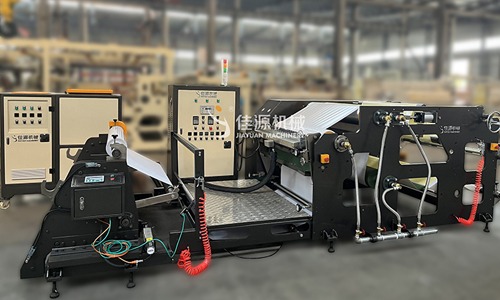
The working principle of automatic coating machines used for screen printing plate making is the same, but their performance varies depending on the model and manufacturer. Screen coating machines are equipped with devices on vertical frames capable of clamping the screen frames.
Main Features
Utilizes a dedicated high-speed coating head to effectively reduce bubble generation.
Both unwinding and rewinding stations are equipped with full-speed automatic splicing mechanisms and closed-loop automatic tension control.
Workflow of the Coating Machine
The process involves applying a layer of specific functional adhesive, coating, or ink onto rolled substrates—such as paper, fabric, leather, aluminum foil, or plastic film—followed by drying and rewinding.
Coating Methods
According to Coating Online, there are two coating methods: one involves multiple wet-on-wet operations to apply photosensitive emulsion onto the screen; the other includes a drying step after each coating application. It is a machine designed for quantitatively applying liquid (or melt) polymer materials like adhesives or coatings onto material surfaces.
Principle of Tape Coating Machine
The working principle of automatic coating machines for screen printing plate making is consistent, though performance differs by model and manufacturer. Screen coating machines feature devices on vertical frames to clamp the screen frame.
Horizontal coating mechanisms are located at the front and rear of the screen area. These mechanisms consist of a coating trough and mechanical or pneumatic components that control the angle and pressure of the trough. Both ends of the coating mechanism are mounted on the vertical support arms of the coating machine. Driven by belts, chains, or cables, the coating mechanism moves up and down to coat along the surface of the screen. The transmission system is connected to a servo or frequency conversion motor, ensuring smooth operation and precise positioning of the coating mechanism.
Before coating, the cleaned and tensioned screen is loaded from the front of the coating machine; some models allow side loading. Side loading is more common in machines designed for large-format screens, as it reduces the amount of lifting and handling required for large and heavy frames.
When integrating automatic screen coating machines with other automated screen processing equipment—such as cleaning, reclaiming, drying, and developing machines—side loading offers greater convenience. Regardless of how the screen is loaded, once it is correctly positioned, pneumatic or mechanical clamping devices engage to lock the screen in place. For enhanced operational convenience, many models feature foot pedal controls for the clamps, freeing the operator's hands to maneuver the screen.
After installing the screen and filling the automatic coater with the appropriate photosensitive emulsion, coating can commence. Depending on the control system and machine capabilities, both sides of the screen can be coated simultaneously.
Application Scope
Suitable for production involving flexible substrates like PVC/PE films. Simply put, it involves applying adhesive onto a film. Specific processes include adhesive application, drying, rewinding, and tension control. The film can be PVC, PE, PET, etc., or materials such as paper—for example, applying hot-melt adhesive onto release paper.
 HOT LINE: 086-577-65159218
HOT LINE: 086-577-65159218












